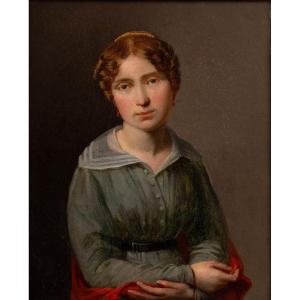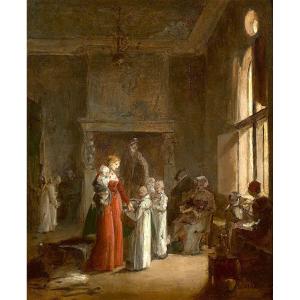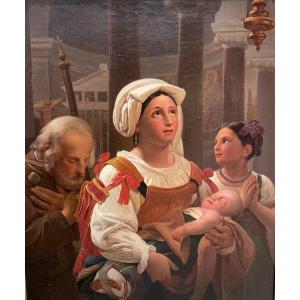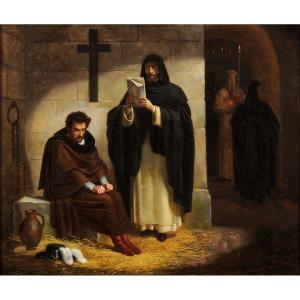The Virgin and the Child Jesus.
Circa 1836-1837.
Oil on canvas.
H: 69.5; L: 55cm.
Exposition : :
- Salon des Artistes Vivants, Paris, 1837, n° 1157 : « La Vierge et l’Enfant-Jésus. ».
A student of Charles Meynier, Amélie Legrand de Saint-Aubin began exhibiting at the Salon of 1819. Until 1850, she participated regularly, exhibiting around thirty works.
Rarely for a female painter, following the Salon of 1827, her talent was recognized by the acquisition of her Christ taken down from the cross (Saint-Étienne-du-Mont Church). This official purchase confirms the competence of women artists in large-format history painting in which a multiplicity of protagonists, diversity of attitudes and fair expression of passions are displayed.
From then until the fall of the July Monarchy, women artists became involved in several original developments in history painting. Among the ever-increasing female historical genre works hanging on the walls of the Salon, large church paintings sit alongside more modest formats intended for individuals.
At the heart of this latest production, female artists favor iconographies consistent with the values, norms and social projections made about their sex. This strategy allows them to play on a supposed sensitivity specific to the female sex, a natural sensitivity which would give them an advantage over men in the representation of certain subjects. Thus they limit male competition in sentimental scenes and themes related to childhood, family or even charity. “The Virgin and Child” is the most popular historical subject among female painters. For the Salon of 1835 alone, the subject was covered by five women for just one man, even though the latter represented nearly 95% of the painting exhibitors.
This Virgin and Child Jesus is part of this latest production. Amélie Legrand de Saint-Aubain deploys a soft color palette, serving her subject, while employing a style very close to the 17th century which is characteristic of her.






























 Le Magazine de PROANTIC
Le Magazine de PROANTIC TRÉSORS Magazine
TRÉSORS Magazine Rivista Artiquariato
Rivista Artiquariato